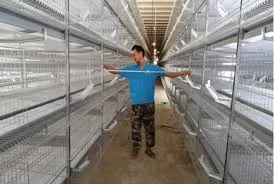feed pelleting machine
វិច្ឆិកា . 15, 2024 01:53 Back to list
feed pelleting machine
The Importance of Feed Pelleting Machines in Modern Agriculture
In recent years, the agricultural industry has seen significant advancements in technology, particularly with the emergence of feed pelleting machines. These machines have revolutionized the way animal feed is produced, providing numerous benefits that contribute to the overall efficiency and productivity of farms. This article will explore the significance of feed pelleting machines, their operational principles, advantages, and how they can transform farming practices.
Feed pelleting machines are designed to convert raw feed ingredients into uniform, pellet-shaped feed. The process involves conditioning the materials with heat and moisture, then forcing them through a die to create pellets of specific sizes. This method not only enhances the feed's nutritional value but also improves its handling and storage capabilities. The pelleting process is particularly beneficial for livestock, poultry, and aquaculture, as it ensures that animals receive a balanced diet tailored to their specific needs.
One of the primary advantages of using feed pelleting machines is the improvement in feed efficiency. Pelleted feed is more digestible compared to loose feed, which means animals can absorb more nutrients from it. This increased digestibility can lead to better growth rates, higher milk production, and improved overall health in livestock. For instance, ruminants often struggle with the consumption of coarse, fibrous feed. Pellets break down more easily in their digestive systems, enhancing nutrient uptake and reducing waste.
Moreover, the uniform size and shape of pellets enable better feed quality control. Farmers can ensure consistency in their feed formulation, which is crucial for maximizing productivity. Additionally, pelleted feed reduces sorting and selection behavior among animals, allowing for a more balanced diet. This is especially important in multi-species operations where different animals may have varying dietary needs.
feed pelleting machine

Another significant benefit of feed pelleting machines is their contribution to reducing feed waste. Traditional feeding methods often result in disintegration and spillage, leading to substantial losses. However, since pelleted feed is denser and easier to manage, it minimizes wastage during feeding. Furthermore, because pellets are compact, they require less storage space, making them a more efficient option for feed storage and transportation.
The environmental impact of feed production is also a crucial consideration. By utilizing feed pelleting machines, farmers can create more sustainable feeding practices. The pelleting process helps reduce the carbon footprint associated with feed production through improved feed utilization and reduced waste. Additionally, these machines can be designed to use alternative ingredients, such as agro-industrial by-products, which helps in the recycling of waste materials and minimizes the depletion of natural resources.
Investing in a feed pelleting machine can also be economically beneficial for farmers. While the initial cost of purchasing the equipment may seem high, the long-term savings incurred from enhanced feed efficiency, reduced waste, and better animal performance can quickly offset these costs. Farmers can also potentially enter new markets by producing specialized feed pellets tailored to specific animal requirements or health issues, thus increasing their overall profitability.
In conclusion, feed pelleting machines play a vital role in modern agriculture by enhancing feed efficiency, improving animal health, reducing waste, and promoting sustainable practices. As the agricultural industry continues to evolve, the adoption of innovative technologies like feed pelleting machines will be essential for meeting the growing demand for high-quality, nutritious animal feed. Consequently, farmers who embrace these advancements will not only boost their productivity but also contribute to a more sustainable agricultural future. The significance of feed pelleting machines extends well beyond individual farms; they represent a critical step towards a more efficient and environmentally friendly agricultural sector.
-
High Performance Exhaust Fan – Efficient Ventilation Solutions for Home
NewsJun.10,2025
-
High-Quality Gestation Pen for Sows Durable Mobile Pig Pen & Simple Pig Pen Solutions
NewsJun.10,2025
-
High Quality Rabbit Cage Double Tier Designs & Welded Wire Mesh Supplier
NewsJun.10,2025
-
Floating Fish Feed Machine - High Efficiency Floating Fish Feed Extruder for Small Scale Production
NewsJun.10,2025
-
Premium Poultry Housing Solutions Mobile & Commercial Free Range Options
NewsJun.10,2025
-
Industrial FRP Fans Corrosion-Resistant Blades & Centrifugal Systems
NewsJun.09,2025






